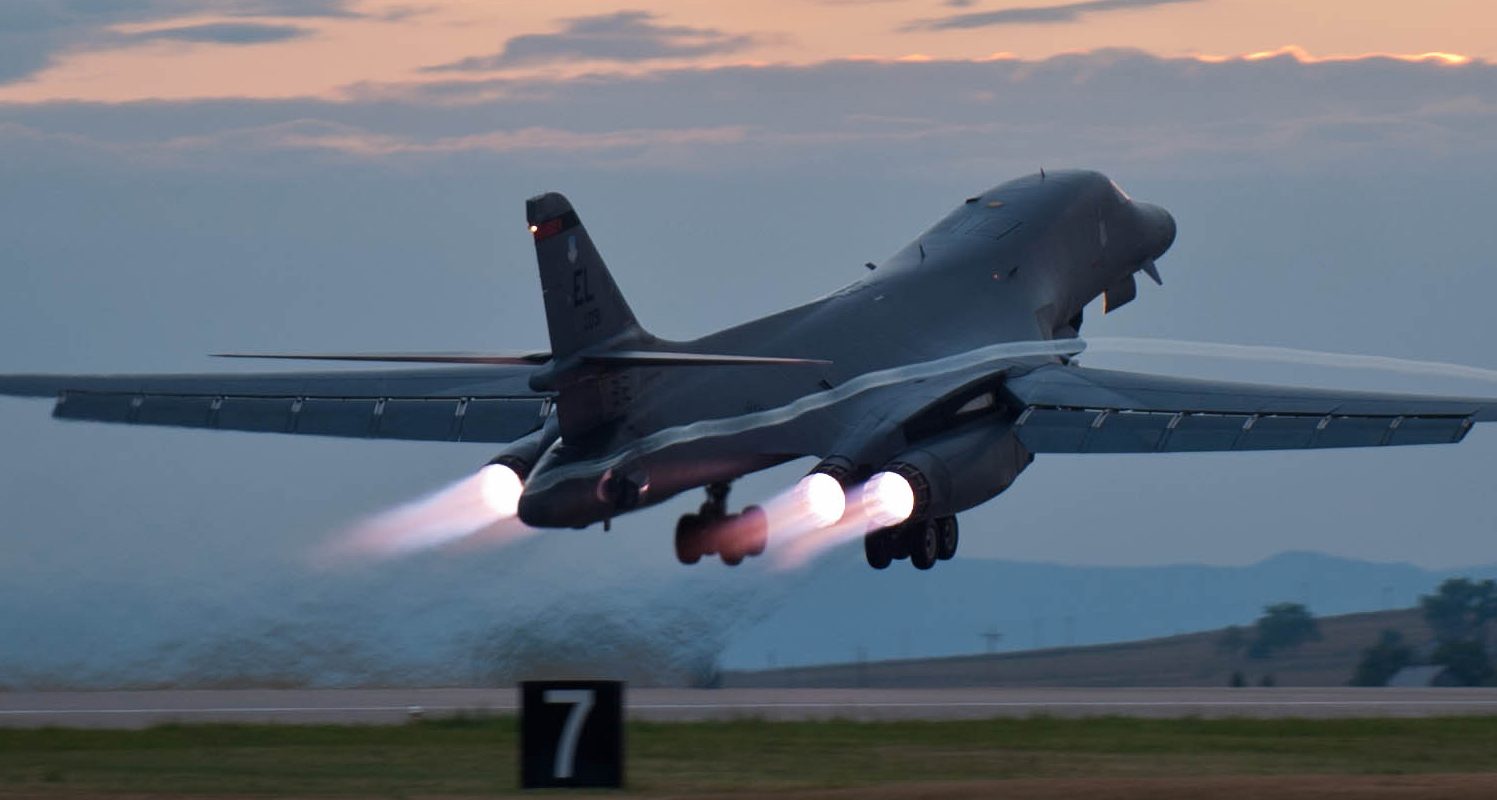

The Air Force is moving 800 airmen and 17 supersonic B-1 bombers from their South Dakota base for 10 months so construction crews can prepare the runway for the secretive B-21 Raider stealth bomber’s eventual arrival.
Crews with the 28th Bomb Wing at Ellsworth Air Force Base, outside Rapid City, have already moved at least one of the base’s B-1s to Grand Forks Air Force Base in North Dakota. The other 16 will be moved in the new year, the Air Force said in a release, once the logistics and ground equipment are in place to service them.
Base officials said that the 800 personnel involved will be sent to Grand Forks on TDY trips, with aircrews, maintenance and other troops rotating back and forth between the two bases. Families will not move with crews.
Ellsworth will be the Air Force’s first to take delivery of the B-21 Raider, the next-generation stealth bomber currently undergoing flight testing at Edwards Air Force Base, California.
“The runway construction at Ellsworth AFB is a key milestone in ensuring we’re ready to receive the B-21 Raider,” said Col. Derek Oakley, 28th BW commander.
The Air Force did not say what type of work is needed at the Ellsworth runway. The base’s current runway is already 13,427 feet long, according to several aviation resource sites, and sits below 3,000 feet in altitude. Those specs allow Ellsworth to easily handle all current U.S. military aircraft, even under their heaviest loads, and are on par with the runways at international mega-hub airports like Dallas/Fort Worth and Abu Dhabi.
Take-off and landing requirements for the B-21 have not been made public but its modern engines and relatively light, all-wing body are unlikely to need a longer runway to get airborne and land safely.
The Air Force plans to take delivery of at least 100 B-21s by 2040, replacing the B-1 and B-2. Ellsworth will be the first base to receive the B-21, the Air Force has said, followed by Whiteman Air Force Base, Missouri and Dyess Air Force Base, Texas.
Whiteman is the sole home of the B-2, while Dyess is the Air Force’s second B-1 base.
B-1s were briefly assigned to Grand Forks in the 1990s, but were transferred out as the base switched from nuclear-focused missions to its current role hosting reconnaissance and tactical aircraft. The base had fields of missile silos for intercontinental ballistic missiles, but those silos were destroyed in the 1990s as part of an arms reduction treaty with Russia.
The base is now home to the 319th Reconnaissance Wing, which flies the RQ-4B Global Hawk, the Air Force’s largest unmanned aircraft. The RQ-4Bs deploy across the world but are flown by operators at Grand Forks.
While at Grand Forks, the Air Force said, the B-1s will “continue to support home station taskings.” A similarly relocated group of B-1s sent to Dyess have flown missions to and from Syria while relocated.
The latest on Task & Purpose
- Marine Corps commandant completes combat fitness test 11 months after open heart surgery
- How generals and admirals get promoted now and how that may change under Trump
- 101st Airborne soldier ‘ain’t come to play’ in cage match video
- Army puts up $15,000 reward to help find 31 pistols and optics stolen from Fort Moore
- ‘Andor’ shows even the Empire has the Pentagon’s acquisition model
